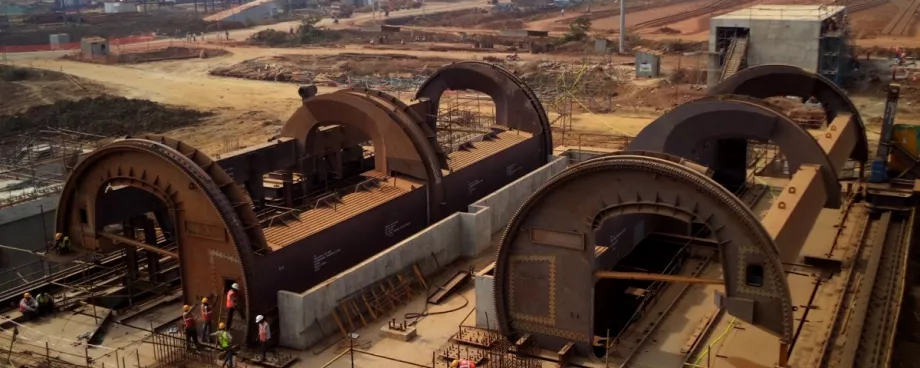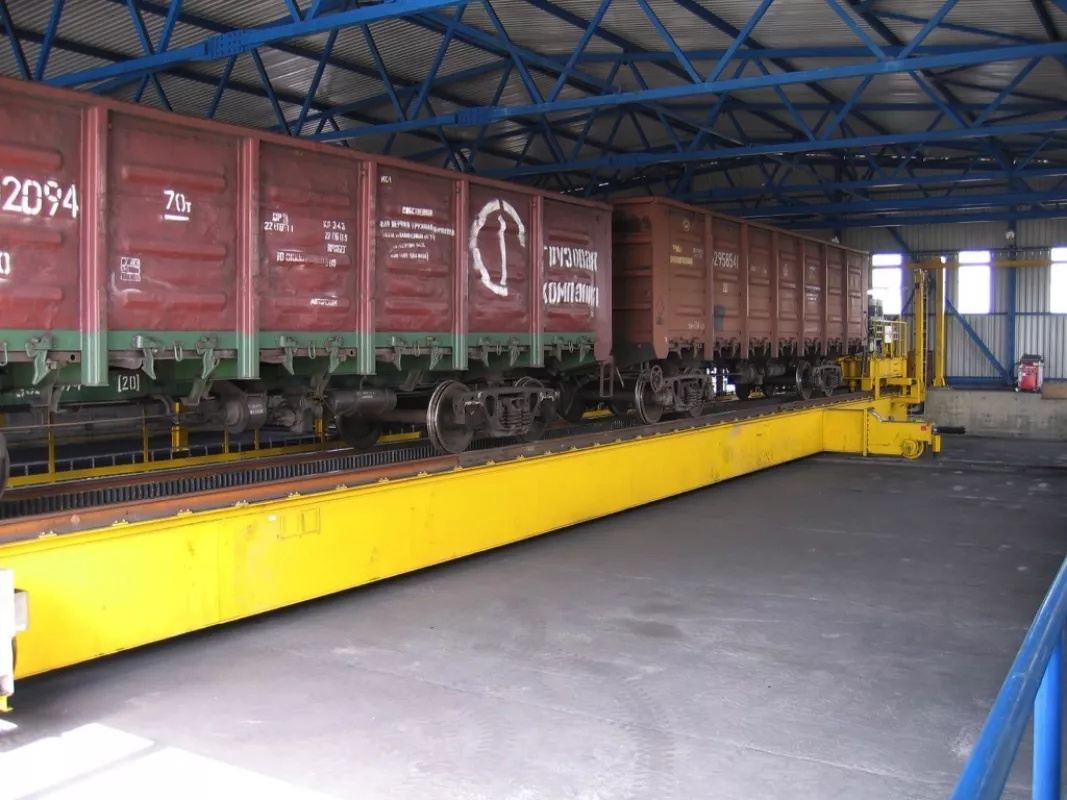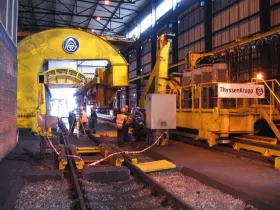
In case hydraulic drives are applied for side arm pusher, indexer or puller cum pusher for tandem tipplers, the size of the power pack will be much bigger and it becomes difficult to accommodate the power pack on the machine platform. This increases size and weight of the moving machine and makes it unstable. Furthermore, during frequent starts and stops and forward and return movements of the machine, the power pack experiences jerks, and is additionally exposed to environmental hazards like dust, heat and rain – which is not desirable.
A typical installation of a tandem tippler consists of tippler, wagon positioner, side arm charger, wheel grippers, hopper and apron feeders:
- A positioner (or indexer) which pulls the loaded rake over a distance of two wagon lengths towards the tippler platform on the inhaul side. The two wagons are decoupled and pulled further towards the tippler platform.
- Wheel grippers installed on the inhaul side engages with the front wheels of the first loaded wagon standing on the inhaul side, ensuring the fixed position of the leading wagon of the loaded rake. Wheel grippers are hydraulically actuated and horizontally arranged.Another set of wheel grippers installed just before the platform on the inhaul side ensures that two wagons are maintained in fixed position, when indexer arm decouples and the side arm charger (SAC) arm couples with the two loaded wagons.
- An SAC which pulls the two wagons on the tippler platform. Simultaneously, the SAC pushes the empty wagons standing on the platform (from the previous unloading cycle) to the outhaul side.
- Another set of wheel grippers installed on the outhaul side engages with the rear wheels of the last (tailing) empty wagon standing on the outhaul side, ensuring the fixed position of this last wagon of empty rake.
- The SAC continues pushing the empty wagons out of platform with controlled speed until they couple with the last empty wagon of empty rake standing on outhaul side. The wheel gripper is now disengaged so that SAC can continue pushing the empty rake through a distance of two wagons and thus continue to form the empty rake on a level track (or max stipulated gradient of 1:1200 as per RDSO guidelines). The last wagon is then gripped and SAC decouples its arm and returns to original position to take charge of the next two loaded wagons placed by the positioner – and the cycle starts again.
The tandem tippler with wheel gripper at inhaul and outhaul side with wagon positioner plus SAC, forms a completely automated system for unloading bulk material from wagons and also reinstalls the empty train at outhaul side.
The tippler unloads the material into the hopper. Two Apron feeders arranged beneath the hopper extract the material at a controlled rate and load the same onto the downstream conveyor system. Apron feeders are provided with variable speed hydraulic or electro-mechanical drive.
Quite often, coal received from mines contains a greater number of oversize lumps. If the percentage of over size material is high, these larger lumps will also be allowed to pass through bigger size grid opening and will be crushed to a desired size by the primary crusher located at the discharge end of the apron feeder. This enables the system to be operated without interuption for clearing the grid. It also allows to reduce the lumps to an acceptable size suitable for loading onto downstream conveyor system.
Fig. 5 shows the drawing of a tandem tippler with apron feeder and primary crusher to crush oversize size lumps coming along with the feed material.
3. Compact Railway Yard Layout by Transfer Platform
To form an empty rake at outhaul side, we need around 700 m free rail tracks at outhaul. This space at times puts severe constraints in plant layout. Today space is at a premium in plant or at the port and is many times an issue because of shortage of land availability due to cost and environmental issues.
Transfer platform installed after tippler at out haul side is an effective solution to this problem. With the help of Transfer platform and built in puller / pusher - we can transfer empty wagons on a track which is parallel to inhaul track and form the empty train. Thus around 700 m length of track is not required at out haul side. This also avoids circular track in the plant area simplifying the plant layout, eliminating constraints on inplant logistics.
Refering to Fig. 7 the reader will find a large plant area occupied by the circular outhaul rail track.
In Fig. 8, it can be seen that the complete out haul circular rail track is eliminated with the help of a transfer platform installed at the out haul side of the tandem tippler making plant layout and internal road and drainage layout much simpler.
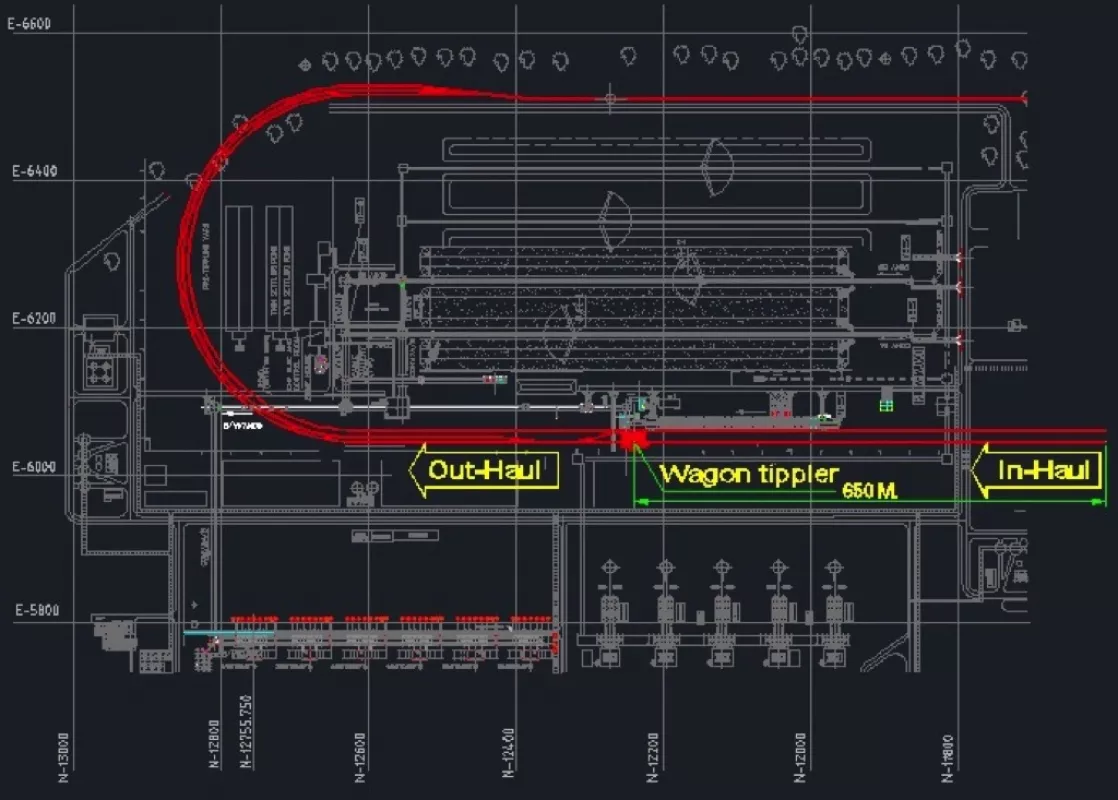
Fig. 7: Plant layout with circular rail track.
|
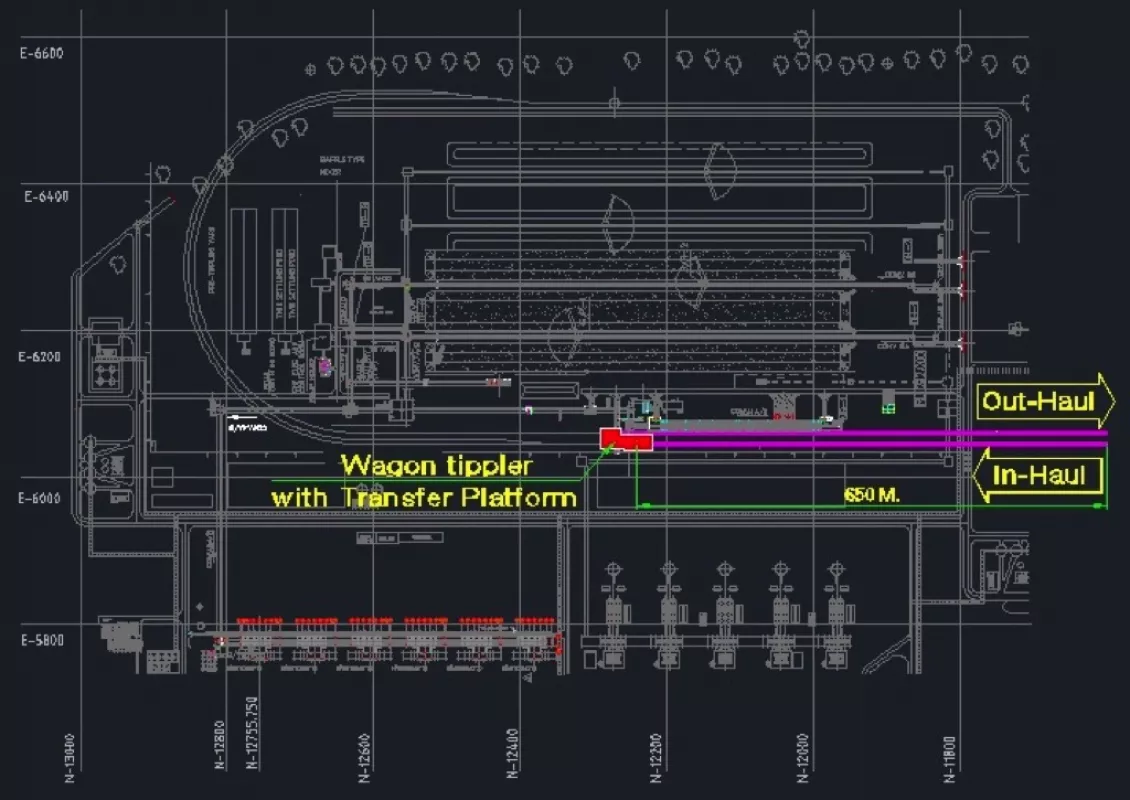
Fig. 8: Plant layout with tippler and transfer platform.
|
Transfer platforms can be used in conjunction with side discharge tipplers, single or tandem rotary tipplers.
Hence to conclude, rotary C-frame type tandem tipplers with transfer platforms are an ideal choice for steel plants, bulk port terminals and power plants to unload bulk materials at a higher rate. Utilisating such equipment reduces demurrage charges and optimises plant rail infrastructure.
■









